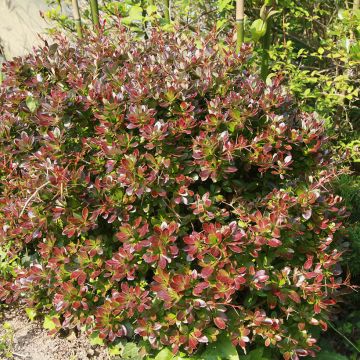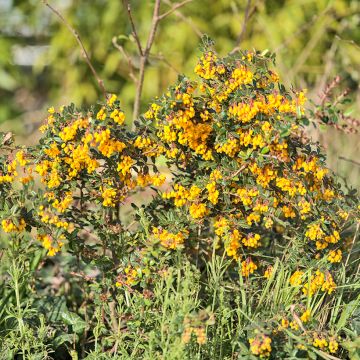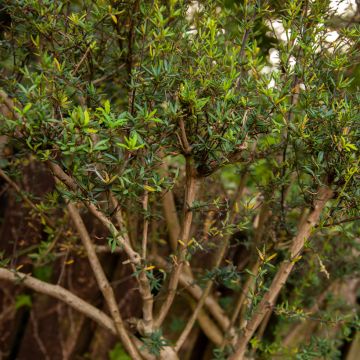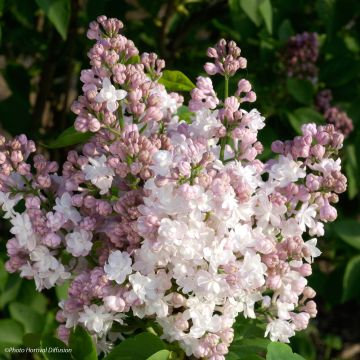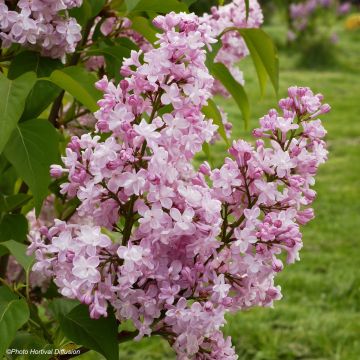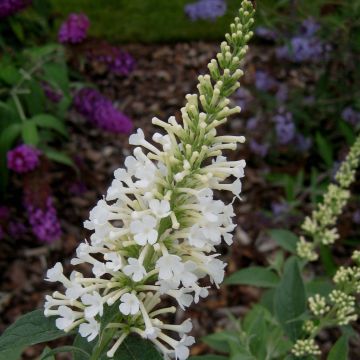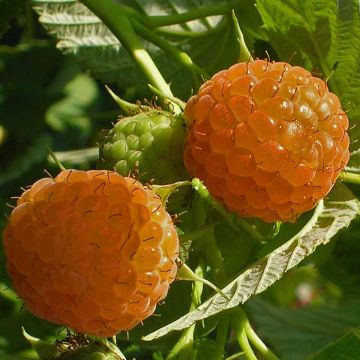

Berberis thunbergii Admiration - Barberry
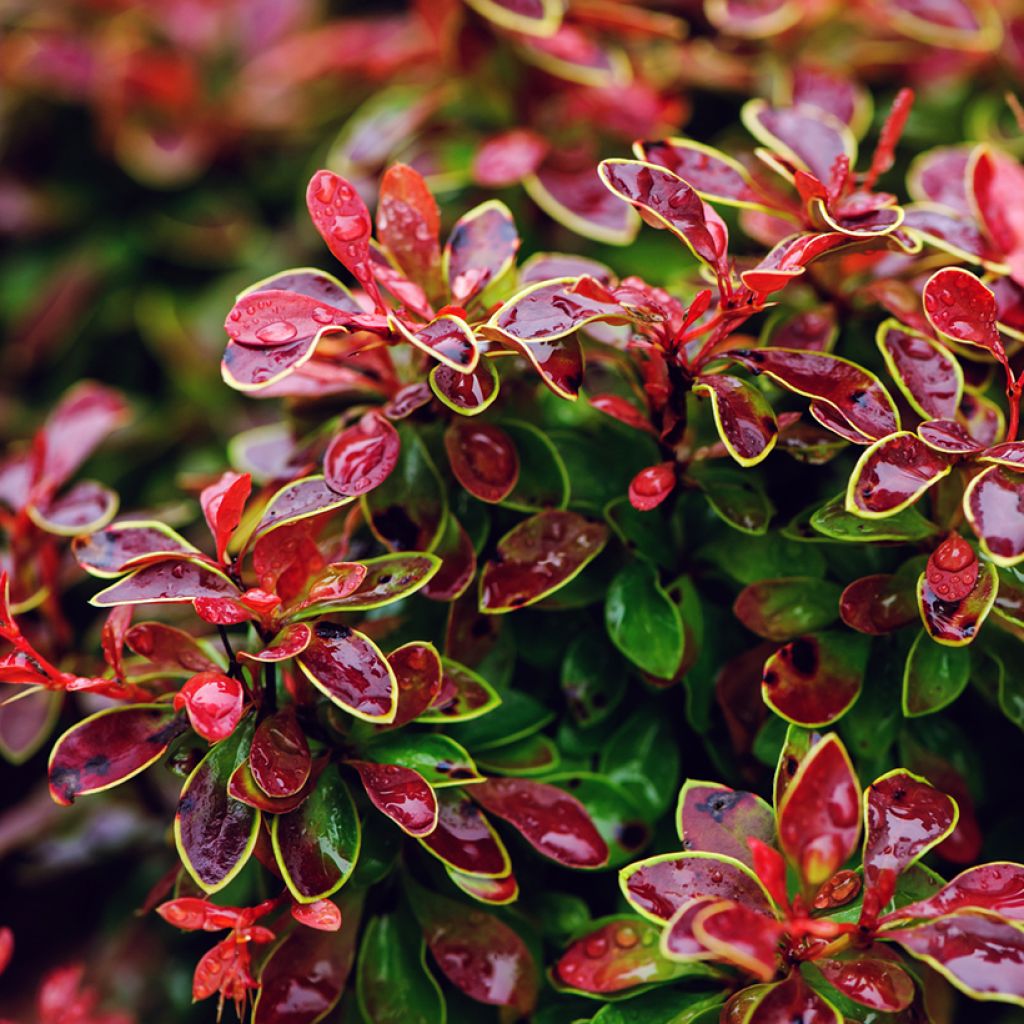

Berberis thunbergii Admiration - Barberry


Berberis thunbergii Admiration - Barberry


Berberis thunbergii Admiration - Barberry


Berberis thunbergii Admiration - Barberry


Berberis thunbergii Admiration - Barberry
Berberis thunbergii Admiration - Barberry
Berberis thunbergii Admiration®
Japanese Barberry
This is the 6th in my garden. I reiterate my previous praises about this bush with its magnificent colours. One must be careful of its very aggressive thorns, so be cautious especially if you have children.
Béatrice, 17/09/2024
This item cannot be shipped to the selected country
Delivery charge from €5.90
Delivery charge from €5.90
More information
Schedule delivery date,
and select date in basket
This plant carries a 24 months recovery warranty
More information
We guarantee the quality of our plants for a full growing cycle, and will replace at our expense any plant that fails to recover under normal climatic and planting conditions.
From €5.90 for pickup delivery and €6.90 for home delivery
Express home delivery from €8.90.
From €5.90 for pickup delivery and €6.90 for home delivery
Express home delivery from €8.90.


Does this plant fit my garden?
Set up your Plantfit profile →
Description
The Berberis thunbergii Admiration is a variety of barberry characterized by a naturally compact habit and remarkably colourful foliage, from spring to autumn. It is a small spiny deciduous bush, with leaves that successively change from vibrant red in spring to purple with yellow margins and finally to orange-red in autumn. In spring, its small yellow flowers stand out against the foliage, as do its bright red berries in late summer. Its dense growth and modest size make it interesting in a large border, shrub bed, or mixed hedge.
The Berberis thunbergii, also known as Japanese barberry, is a bush in the family Berberidaceae, native to Japan. It has a bushy, spreading habit and deciduous or semi-evergreen foliage in mild climates.
The 'Admiration' cultivar was obtained in 1995 by Michal Andrusiv in the Czech Republic. The bush will quickly reach a height of 1.20m (3ft 11in) with a spread of 1.50m (4ft 11in). The red branches are rather upright and bear quite aggressive thorns. The foliage is the main asset of this barberry. It consists of rounded leaves measuring 2 to 3cm (1.2in) in length, obovate (ovate, with the upper part of the leaf wider than the lower part), and shiny. When they first emerge, they have a light and vibrant red colour, then as they mature, they turn purple with a yellow margin. In April-May, clusters of 1 to 6 small flowers bloom on 1-year-old stems. The bell-shaped flowers, 1cm (0.4in) long, are pale yellow, tinged with red on the outside. They are nectar-rich and followed in September-October by a few small bright red spherical fruits, measuring 6 to 8mm (0.3in) in length which persist on the branches for part of the winter. The foliage takes on a beautiful reddish-orange hue before falling in October-November.
The Berberis thunbergii Admiration, hardy down to -15°C (5°F), thrives in sunny locations with well-drained soil, even if it is chalky, poor, or rocky, but not excessively dry in summer. Naturally compact, it does not require pruning. It can be used to create a low hedge, combined with other golden-leaved barberries ('Bonanza Gold') or silver-leaved shrubs (Powis Castle artemisia), to create a beautiful colour scheme. Easily create an attractive scene by combining it with Pieris, heucheras, and Chinese peonies.
Report an error about the product description
Berberis thunbergii Admiration - Barberry in pictures




Plant habit
Flowering
Foliage
Botanical data
Berberis
thunbergii
Admiration®
Berberidaceae
Japanese Barberry
Cultivar or hybrid
Other Berberis - Barberries
Planting and care
The Berberis thunbergii Admiration, hardy down to -15°C, should be planted in spring or autumn, in well-drained soil, even if it's limestone and slightly poor or rocky. Place it in a sunny position to enhance its colours. Water generously and frequently during the first summers. No need to fertilize. It requires little maintenance, just make sure to keep the soil moist, especially in summer. For Berberis planted as hedges, balance the shape in spring and September. In informal hedges, trim the branches after flowering, to give the bush a rounded, balanced shape. Be careful not to touch the branches with bare hands, as they have spines that are difficult to remove once they have entered the skin.
Planting period
Intended location
Care
-
, onOrder confirmed
Reply from on Promesse de fleurs
Hedge shrubs
Haven't found what you were looking for?
Hardiness is the lowest winter temperature a plant can endure without suffering serious damage or even dying. However, hardiness is affected by location (a sheltered area, such as a patio), protection (winter cover) and soil type (hardiness is improved by well-drained soil).

Photo Sharing Terms & Conditions
In order to encourage gardeners to interact and share their experiences, Promesse de fleurs offers various media enabling content to be uploaded onto its Site - in particular via the ‘Photo sharing’ module.
The User agrees to refrain from:
- Posting any content that is illegal, prejudicial, insulting, racist, inciteful to hatred, revisionist, contrary to public decency, that infringes on privacy or on the privacy rights of third parties, in particular the publicity rights of persons and goods, intellectual property rights, or the right to privacy.
- Submitting content on behalf of a third party;
- Impersonate the identity of a third party and/or publish any personal information about a third party;
In general, the User undertakes to refrain from any unethical behaviour.
All Content (in particular text, comments, files, images, photos, videos, creative works, etc.), which may be subject to property or intellectual property rights, image or other private rights, shall remain the property of the User, subject to the limited rights granted by the terms of the licence granted by Promesse de fleurs as stated below. Users are at liberty to publish or not to publish such Content on the Site, notably via the ‘Photo Sharing’ facility, and accept that this Content shall be made public and freely accessible, notably on the Internet.
Users further acknowledge, undertake to have ,and guarantee that they hold all necessary rights and permissions to publish such material on the Site, in particular with regard to the legislation in force pertaining to any privacy, property, intellectual property, image, or contractual rights, or rights of any other nature. By publishing such Content on the Site, Users acknowledge accepting full liability as publishers of the Content within the meaning of the law, and grant Promesse de fleurs, free of charge, an inclusive, worldwide licence for the said Content for the entire duration of its publication, including all reproduction, representation, up/downloading, displaying, performing, transmission, and storage rights.
Users also grant permission for their name to be linked to the Content and accept that this link may not always be made available.
By engaging in posting material, Users consent to their Content becoming automatically accessible on the Internet, in particular on other sites and/or blogs and/or web pages of the Promesse de fleurs site, including in particular social pages and the Promesse de fleurs catalogue.
Users may secure the removal of entrusted content free of charge by issuing a simple request via our contact form.
The flowering period indicated on our website applies to countries and regions located in USDA zone 8 (France, the United Kingdom, Ireland, the Netherlands, etc.)
It will vary according to where you live:
- In zones 9 to 10 (Italy, Spain, Greece, etc.), flowering will occur about 2 to 4 weeks earlier.
- In zones 6 to 7 (Germany, Poland, Slovenia, and lower mountainous regions), flowering will be delayed by 2 to 3 weeks.
- In zone 5 (Central Europe, Scandinavia), blooming will be delayed by 3 to 5 weeks.
In temperate climates, pruning of spring-flowering shrubs (forsythia, spireas, etc.) should be done just after flowering.
Pruning of summer-flowering shrubs (Indian Lilac, Perovskia, etc.) can be done in winter or spring.
In cold regions as well as with frost-sensitive plants, avoid pruning too early when severe frosts may still occur.
The planting period indicated on our website applies to countries and regions located in USDA zone 8 (France, United Kingdom, Ireland, Netherlands).
It will vary according to where you live:
- In Mediterranean zones (Marseille, Madrid, Milan, etc.), autumn and winter are the best planting periods.
- In continental zones (Strasbourg, Munich, Vienna, etc.), delay planting by 2 to 3 weeks in spring and bring it forward by 2 to 4 weeks in autumn.
- In mountainous regions (the Alps, Pyrenees, Carpathians, etc.), it is best to plant in late spring (May-June) or late summer (August-September).
The harvesting period indicated on our website applies to countries and regions in USDA zone 8 (France, England, Ireland, the Netherlands).
In colder areas (Scandinavia, Poland, Austria...) fruit and vegetable harvests are likely to be delayed by 3-4 weeks.
In warmer areas (Italy, Spain, Greece, etc.), harvesting will probably take place earlier, depending on weather conditions.
The sowing periods indicated on our website apply to countries and regions within USDA Zone 8 (France, UK, Ireland, Netherlands).
In colder areas (Scandinavia, Poland, Austria...), delay any outdoor sowing by 3-4 weeks, or sow under glass.
In warmer climes (Italy, Spain, Greece, etc.), bring outdoor sowing forward by a few weeks.


































